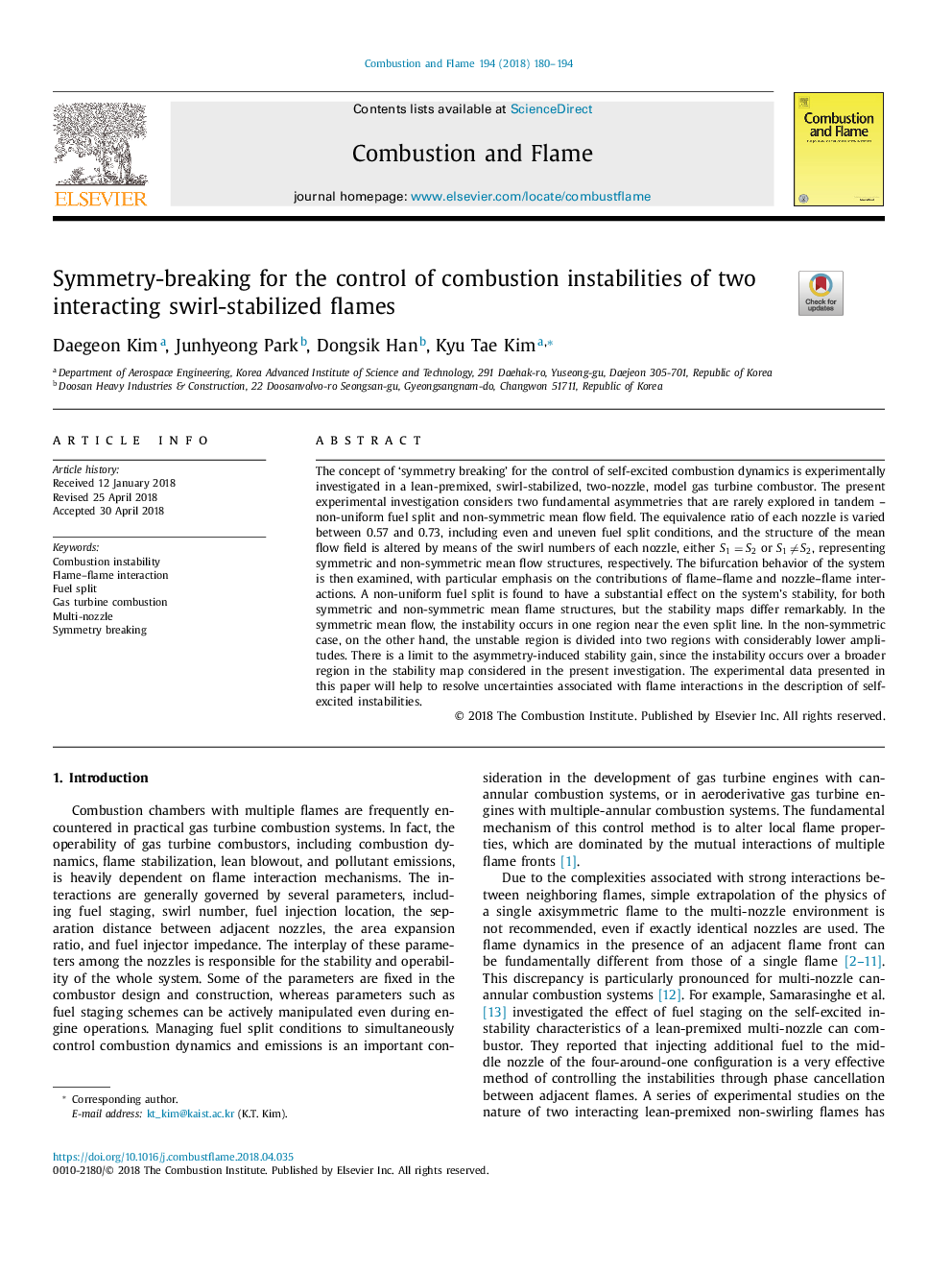| Article ID | Journal | Published Year | Pages | File Type |
|---|---|---|---|---|
| 6593470 | Combustion and Flame | 2018 | 15 Pages |
Abstract
The concept of 'symmetry breaking' for the control of self-excited combustion dynamics is experimentally investigated in a lean-premixed, swirl-stabilized, two-nozzle, model gas turbine combustor. The present experimental investigation considers two fundamental asymmetries that are rarely explored in tandem - non-uniform fuel split and non-symmetric mean flow field. The equivalence ratio of each nozzle is varied between 0.57 and 0.73, including even and uneven fuel split conditions, and the structure of the mean flow field is altered by means of the swirl numbers of each nozzle, either S1=S2 or S1â¯â â¯S2, representing symmetric and non-symmetric mean flow structures, respectively. The bifurcation behavior of the system is then examined, with particular emphasis on the contributions of flame-flame and nozzle-flame interactions. A non-uniform fuel split is found to have a substantial effect on the system's stability, for both symmetric and non-symmetric mean flame structures, but the stability maps differ remarkably. In the symmetric mean flow, the instability occurs in one region near the even split line. In the non-symmetric case, on the other hand, the unstable region is divided into two regions with considerably lower amplitudes. There is a limit to the asymmetry-induced stability gain, since the instability occurs over a broader region in the stability map considered in the present investigation. The experimental data presented in this paper will help to resolve uncertainties associated with flame interactions in the description of self-excited instabilities.
Related Topics
Physical Sciences and Engineering
Chemical Engineering
Chemical Engineering (General)
Authors
Kim Daegeon, Park Junhyeong, Han Dongsik, Kim Kyu Tae,
